Art/computer work that has interfered with my welding but I never miss an opportunity to collect native plants. I have converted an old kayak rack into a plant drying rack. Stacking up and drying out.
Drying native grasses
Your Custom Text Here
Art/computer work that has interfered with my welding but I never miss an opportunity to collect native plants. I have converted an old kayak rack into a plant drying rack. Stacking up and drying out.
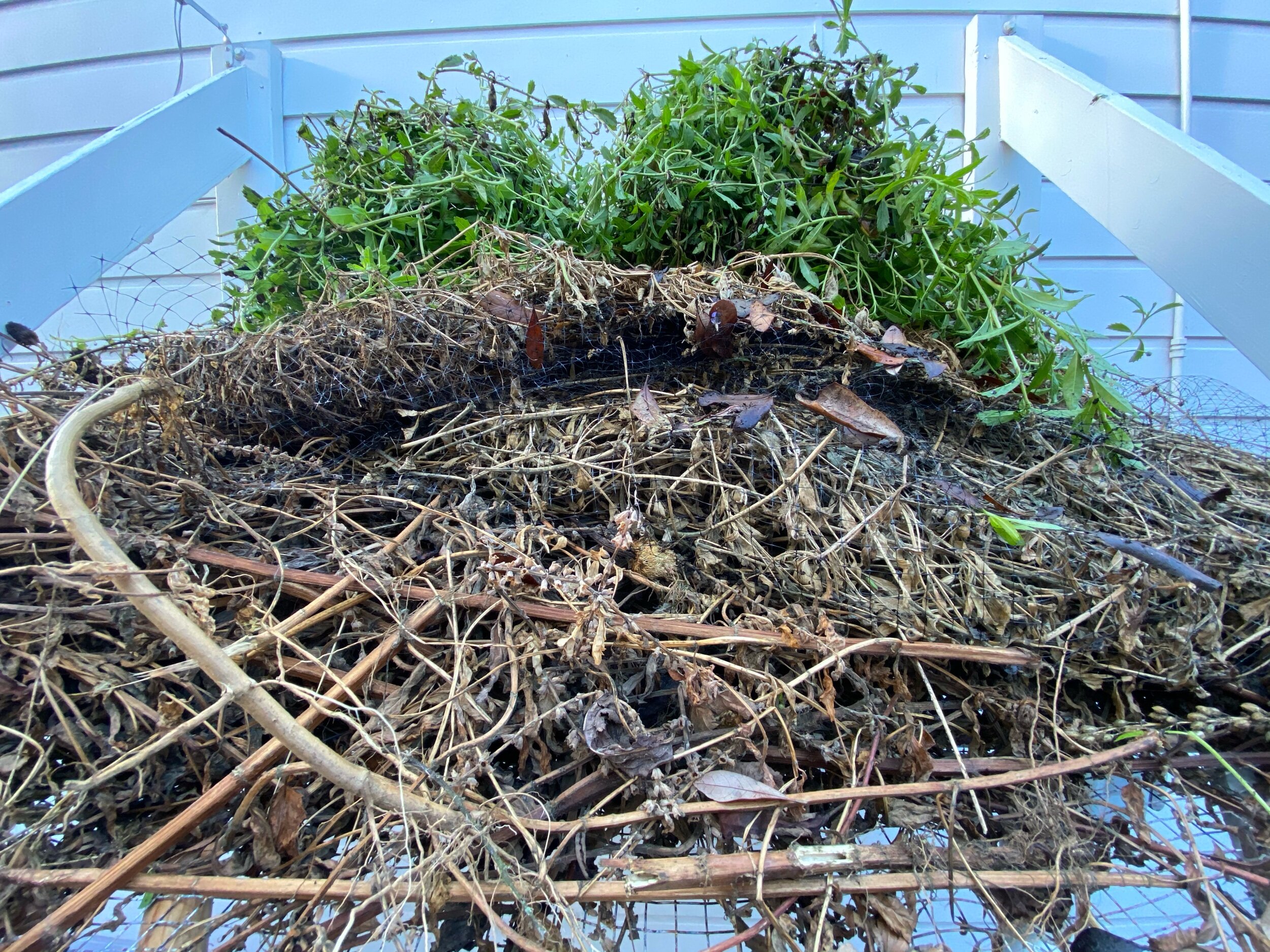
Drying native grasses
When I start to build a new piece the first thing I do is gather and organize all the reference images and information I am going to need.
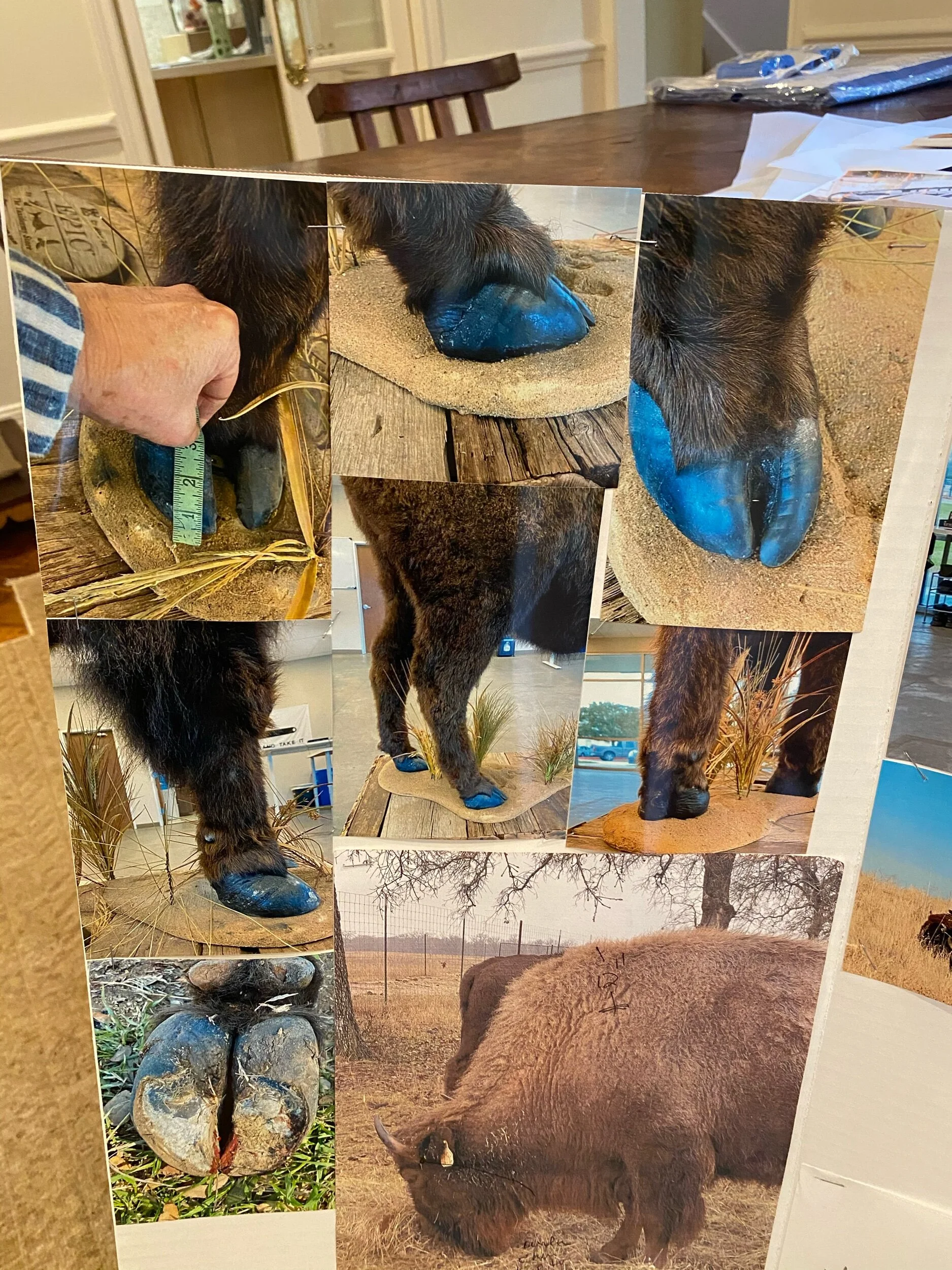
I staple all the images to a piece of cardboard. This way it us easy to see as I work. This secti n focuses on the hoofs. I am starting with the hoofs.
For the full story see Endangered Knowledge: The Soul of Humus
It does not stand to reason that gardens or yards in Texas, Maryland, California, Iowa, and Illinois should all be landscaped with the same selection of plants. The below image from Native Texas Gardens says it all. In a country with great diversity from coast to coast, shouldn’t the sculpture garden landscapes be embedded in plants that define the place?
It will be more interesting to see sculptures in gardens of indigenous plants, plants that define the place, terrains that have attracted its people and impacted its economy. A sculpture of a boat marooned in a desert landscape might imply global warming and the same wooden vessel docked in a sea of woody pines congers up thoughts of concervation. one thing the same boat Sculpture changes across geography. What does sculpture look like in a coastal prairie sculpture garden?

Page xviv of Native Texas Gardens, maximum beauty, minimum upkeep by Sally and Andy Wasowski.

I reached out to the Houston Arboretum describing my project and my need for native plants. They responded immediately. They are steadily cutting plants out and I made a big haul today. My studio floor is covered in drying plants. I am drying these on my patio. Curtis suggested every morning I flip them, so rodents don't decide to nest in them. I love all animals but I am not a fan of rodents nesting around my house. They offered me to raid their compost bend as I need. :)



A peak in n my studio rich with native plants drying
I reached out to the Katy Prairie Conservancy, and they put me in touch with Bill Stransky with the Texas Rice Coalition, Bill a founder of the Katy Prairie Conservancy is a rock star in the nature Conservancy world. He very kindly offered to help me identify native grasses. He met me on a Sunday morning with his college-age daughters and not only pointed out native plants, but they helped me cut and bag them. It was such an honor to meet him and have him support my environmental work. I can not finish these piece without help in accessing native plants. It was a great day. I am hoping to meet Bill again in the fall when the rice plants are ready to harvest. It is important I have rice grasses since the exhibitiion space is a Success rice grain silo. The plants we harvested are presently drying in ny studio. My studio smells like heaven covered in plants. It is also the new home to a few spiders.

Bill Stransky and his daughters.

A bag of prairie seed mix. - donated by Bill to my project

The mix-
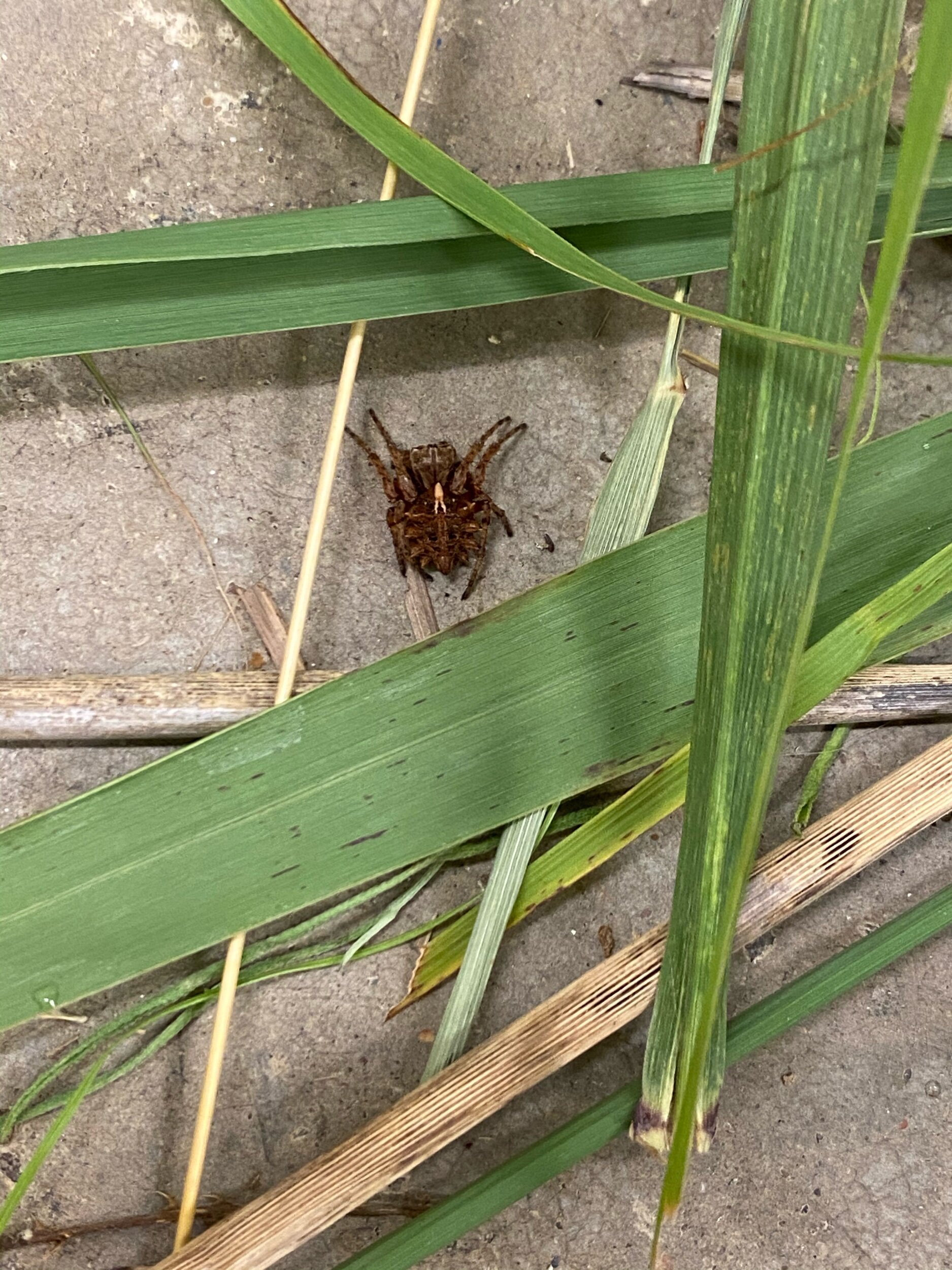
A new studio mate.

This is just the beginning, I need a lot more plants to dry for this large old male beast.
My daughter special requested this piece. She asked if I could make her a sapling. My response was I could try, but the pencil size steel limits how thin I can make the tree limbs. Long story short, the sapling grew old fast. After the first coat the sapling limbs we're no longer sapling thin.

Covered in lath

Keeping an eye on my mix

The first coat - the bronze leaves are covered in green plastic to protect them.

First, I paint on the bonding liquid.

The piece is now ready for coat number 2.

Coat number 2 ✅

Here is the image edited super light in order to show the texture.

More details

Detail of upper branches

A little more concrete need under the bird.

Detail of trunk

The lower trunk and base.
The abundance of knots is evidence that this tree is the host of many insects and good bacteria. Bees and other insects use trees for nesting and receive antiviral properties from the fungus and bacteria that grow on the tree.

Since last November I have been dropping hints to Houston Chronicle writer Molly Glentzer to write a native bee article. Earlier this week she called to talk about native bees. Some of the information I talk about when I talk about bees is alarming. She asked if I knew a locacal native bee athaurity, I did not. She said she could find one.
Here article came out today. Sadly she did not mention my bee art activism but the native bee specialist confirmed everything I have been saying. And yes It is alarming. Knowledge is power. - plant native non hybrid plants, blue, purple, yellow and white primarily. Starting the conversation with art activism.
her awesome article is below.
https://www.houstonchronicle.com/life/gardening/article/Your-Houston-garden-needs-native-bees-15287310.php


This was awesome to receive, I am feeling hopeful. It is amazing to have a city Council Woman who cares and listens to citizens opinions. Screenshot from my phone email.
Sally and Hannah
The video of the FY21 budget workshop-Parks and Recreation was very informative.
Here is what I got out of the video that will help you move the city in an environmentally forward direction. I have broken it down into five steps.
Steve Wright knows the value of native plants and grasses. He expressed that he would like to move more in that direction. He does not because the public is not educated. With Steve on board, this is a great opportunity, and the timing is perfect. Sally, it is great you identified this opportunity, by leading Steve you can save the city money and the planet.
Step One – In Steve's presentation, #5 Greenspace Management (GSM), the city is spending $2,000,000 on mowing esplanades, and in #15 Quality Assurance, they spend $2,500,000 for safety training to maintain the esplanades. Making all esplanades native grasses is a change that will free up a significant amount of money and help all insects as well as the bee. With Covid 19 sucking the life out of the country, the financial savings alone is reason enough to make the transition. This change will start the education of the citizens. Now is the time to take the first step in making Houston a leading city in environmental policy and help with the budget.
Step Two – Steve did not mention the chemical additives or equipment the city uses. City Parks and Recreation would also save money on the chemicals used on manicured landscapes such as herbicides, pesticides, fungicides, and neonicotinoids. This change would also impact the dollars spent on equipment and fuel for lawnmowers. Have Steve add that number up for you.
Step Three- Have Steve's people look at every area they manage: the city libraries, trails, parks, sports fields, golf courses. The zoo should also be charged with evaluating its grounds. Have them identify pockets in these city public spaces where they can save money by transitioning to native plants. There is a lot of precedent in other cities for native plant golf courses. Golf courses use an extreme amount of labor and chemicals; this could be a significant number in the budget.
Step Four – Steve mentioned Public Works land. It was not clear whose budget it is in, but it should be maintained in an environmentally forward thinking manner.
Step Five – Steve was concerned about the public's knowledge of the benefits of native landscaping versus the mindless conformity of the manicured landscapes that we are used to seeing. This education is a project for his new social media employee. In addition, the Mayor should call a press conference and make a big deal of the City Councils' commitment to not only the health of it’s citizens but also the environment and not mindlessly conforming to unhealthy chemically dependent landscape practices and to saving Houstonians a lot of money. The Mayor can also go into the benefits of restoring native prairie vegetation as it decreases water runoff and flooding, increases soil absorption of water and slows floodwaters on land.
A press conference is excellent advertising. It can also be addressed on the citiy’s website.
If you need inspiration, look at the 5/2020 National Geographic, Where Have All the Insects Gone? Pp. 40-65. The article is a study from 1989 to 2016 of flying insects. The study reported a 70% decline. You will find quotes such as "ecological Armageddon", "we find ourselves in the middle of a nightmare", "According to the website Altmetric, which tracks how often publish research is mentioned online, the study was the sixth most discussed scientific paper in 2017."
Insects do the dirty work for us; they pollinate, disperse seeds, are food for freshwater fish, and about every land animal, from reptiles to birds. They decompose our waste; without insects dead, organic matter will pile up. N. G reported the work insects do is equivalent to $57 billion a year in the US.
After you tackle the City Parks, we can look at residential and commerci

Daddy always had a few tomato plants growing in a pot. We decorated the tables with celebrity tomato plants to be taken home in by those who came to celebrate his life. We had each one in a brown bag. The same type and size of the container that one would keep a big bottle of Coors beer inside their truck. The brown bag has meaning to my siblings and me.
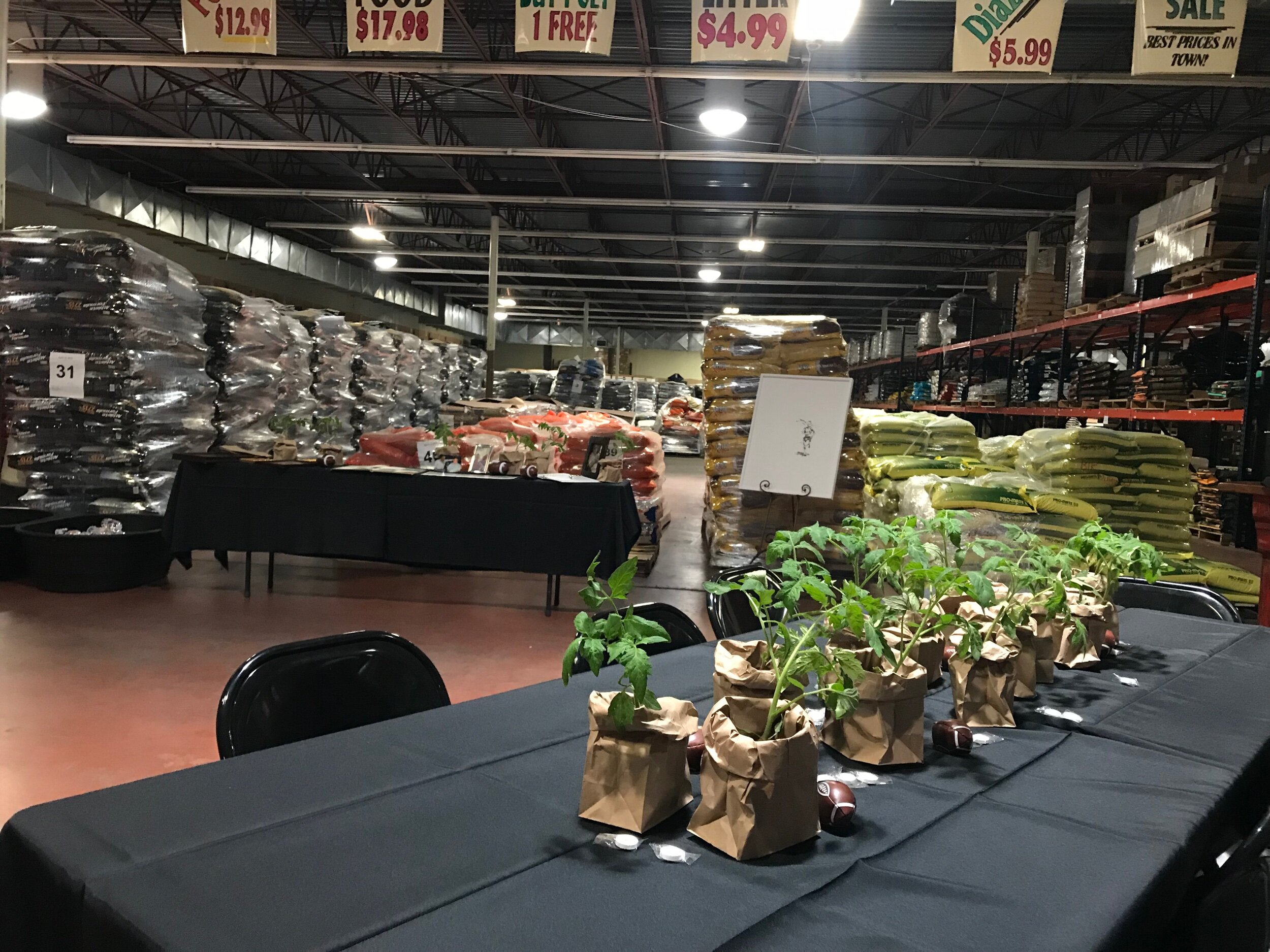
The feed store warehouse wake.

From left my oldest brother Bob, my baby sister Janet Fortune, my brother Dean and his dog Johnny and me. Front and center in the born and raised bag my father’s ashes in 3 big containers and one tiny container.
Another day of social distancing and not being able to get in my studio. Today's stitching, I added the first of several sweat bees. In reality, they are only about 1/4 ” long. They have beautiful metallic greens and blues. I am working to show more time and movement in my stitching.

I added a tiny sweat bee - he is moving fast and as a result blurry

First I cut some thread of the colors I want the bee to be.

Next I wad them up into a cocoon.

Then I untangle them into the shape of the movement of a bee.

Then I stitch them into the shape of the movement.
This summer it came to my attention that the River oaks Garden Club was having a luncheon with a bee theme. I quickly reached out to their luncheon Chair and she connected me to their environmental chairman. They came to my studio and we talked about the 4,000 wild bees species and how most people only know about honey bees.
Long story short I was invited to talk about the bees at their annual Azalea trail fundraiser. They were Slammed with people. I spoke none stop on Sunday from 11-5.
In addition the environmental chairs decided to work the native bee (the endangered bees) story into their both at their garden show this spring. It is organizations and ladies like these that can save the wild bees.

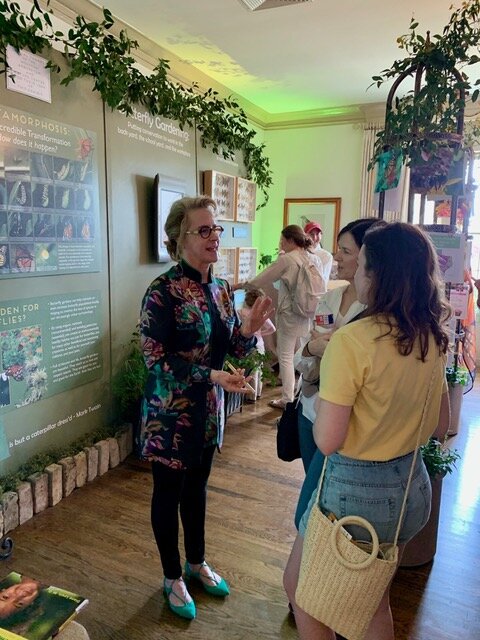
Image courtesy of Janna Webber
Osmia Texana - The Berry Bee This frantic bee is about as big as a housefly. If you look at one with a macro lens you can see they are a beautiful metallic blue. The underside of their abdomen is a fuzzy pollen mop. These pollen magnets are the perfect shape to collect pollen from blueberries, raspberries, strawberries, melons, and veggies, to name a few. They are not picky pollinators.
A single Texana Bee frantically visits 20,000+ blossoms per day, whereas a honey bee visits 50-1000. They are not- aggressive and non-colonizing, solitary bees.
They emerge in the spring and have an average pollinating season of 6-8 weeks, after which they die. Their offspring will hibernate over the winter and emerge the following spring.
They are found on both the central and North American continent.

Watercolor monotype 44” X 30.”

The ghost
Things are now going smoothly maybe too smoothly. All the work I did this summer is paying off.
ps. I now have the equivalent of another silo full of work in my studio………. bursting at the seems. Anyone need a keystone animal environmental installation?



Each small element bagged separately making bouquet of bee cocoons

Making my own wardrobe style boxes.

My pieces hang from the top of the boxes. I needed something to support the top of the box. Southland hardware yard sticks were the cheapest thing I could find. I think they will work.

My sculpture wardrobe boxes have doors.

The pieces in bags make awesome amnion shadows

7 boxes ready to go.

Behind and attached to the Silos at Sawyer Yards

The lobby of the SITE Gallery Houston with the mechanicals of the grain silo in place. Just the coolest


Green marks the spot

In May I started seeking a space to exhibit new environmental, 4D kinetic sculptures. I hoped to use this new work as a start to an art installation inspiring conversations about topics I am very passionate about; the unexpected consequences of forcing natural processes into an industrial model and the complex relationships between humans, plants, and animals.
The stars aligned in July when Sculpture Month Houston’s founder and curator, Volker Eisele, invited me to be one of the 19 artists asked to create a site-specific sculpture in the historic Success Rice Grain Silos behind the Sawyer yard’s artist studios. In the 50th anniversary year of man landing on the moon, this year’s exhibit title is Outta Space from the 2012 Van Halen album A Different Kind of Truth. Outta Space will combine two curatorial themes: one features work focused on environmental degradation issues and the other focuses on interpretations and explorations of Alternative Worlds as envisioned in the fantasies of the artists.
I have passionately committed myself to this installation every day since July. My passion comes from spending my early years on a farm in west Texas, from my concerns regarding industrialized food and its effect on our health, from my love for historic buildings and, most importantly, from my desire to make an impact on the return of our most important keystone species.
As a site specific installation artist my aspiration is to create a piece that is unique to the silo’s space and true to my work. My silo is a circular space constructed from cinder blocks, 18’ in diameter and spans 20’ in height. It has, in the center of the space a 10’ tall funnel suspended from the ceiling. There are a few old, large light fixtures, conduit runs vertical and perpendicular on the walls and there are three entrances to the space. I have three weeks to install the work that I have assembled to date. My mantra as an artist is “if I am not nervous to take on a new project then I am not stretching myself”. I am slightly anxious, yet happy to embrace the butterflies and honored to have my name listed among this year’s SMH artists.
In celebration of the opening there will be food trucks, a bar and music provided by Chapel In The Sky with projections by Michael Walrond - SHDWSOFDUST.
Public Opening for the Exhibition
SITE Gallery Houston,
1502 Sawyer St. Houston, TX 77007,
(The multi-story building behind the artist studios facility).
https://glasstire.com/2016/11/04/the-problems-and-rewards-of-houstons-silos/
https://glasstire.com/2017/10/30/a-conversation-about-art-and-the-silos-on-sawyer/


Bombus Affinis I
30” X 44” watercolor monotype

Wing detail from Bombus Affinis I

Bombus Affinis I ghost
30” X 44” watercolor monotype
Day 2-
I like the big black brush strokes, the antennae, but I do not like that both wings have the same weight. I want the back wing to be in more motion and fainter. When I look back at the work from day one, I am feeling better about parts of it. I like the wings and the last sections of his abdomen. Below are some close up shots of the parts I like of both days’ experiments.

Bombus Affinis II 30” X 44” watercolor monotype

Day 2 antenna
Day 3 - layering the different processes. I am closer to what I want but I am not there yet.


Bombus Affinis III

A favorite moment in Bomus Affinis III
a tail, leg and two wings


Bombus Affinis III ghost

Bombus Affinis IV


Bombus Affinis V

Day 4
Below are some moments I especially like. Today anyway.
Finally I am loosening up. I want an image of the bee’s energy - I want the life, movement and energy of a fuzzy pollinator even if he is endangered. I do not want a drawing of a bee.

Top of Head and thorax

Mauvish/brown/black bee eye and thorax

The fuzzy tail and two delicate wings

My work space

Leftover ink in the trey- Inspiration for a bee wing.
Connecting the legs and reinforcing them.

Building the hips and connecting the legs

Side view

View from back


I create triangles to give the piece stability and strength.

Left side view with triangles

View from the back

view of the right side

Using scraps to create triangles to strengthen the ankles.
Looking back, I can now see the hips are not right and are exaggerating the movement. I will have the movement exaggerated when the piece is finished, but for the armature, I will have to tone it down.
My daughter special requested this piece. She asked if I could make her a sapling. My response was I could try, but the pencil size steel limits how thin I can make the tree limbs. Long story short, the sapling grew old fast. After the first coat the sapling limbs we're no longer sapling thin.

Covered in lath

Keeping an eye on my mix

The first coat - the bronze leaves are covered in green plastic to protect them.

First, I paint on the bonding liquid.

The piece is now ready for coat number 2.

Coat number 2 ✅

Here is the image edited super light in order to show the texture.

More details

Detail of upper branches

A little more concrete need under the bird.

Detail of trunk

The lower trunk and base.
The abundance of knots is evidence that this tree is the host of many insects and good bacteria. Bees and other insects use trees for nesting and receive antiviral properties from the fungus and bacteria that grow on the tree.